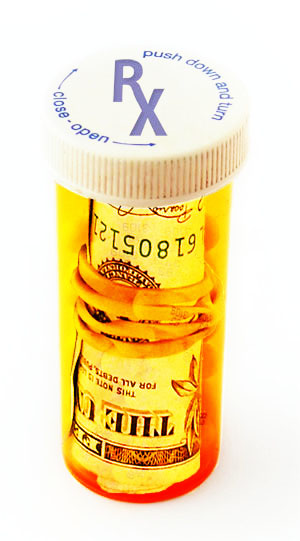The journal Health Affairs reports about a study released earlier this month that indicates many seniors are overpaying for their Medicare Part D coverage.
Specifically, the study found that in 2009 only 5.2% of Part D beneficiaries chose the cheapest plan available in their region “given their medication needs.”
The study, co-authored by University of Pittsburgh faculty members Chao Zhou and Yuting Zhang, found that on average beneficiaries spent $368 more than necessary on their prescription drug plans (also knows as PDPs or PDP plans).
According to the study, over 20% overpaid by $500 or more, most often by choosing and overpaying prescription drug plans that provided unnecessary benefits.
The study went on to suggest “beneficiaries need more targeted assistance from the government to help them choose plans.”
Kaiser Health News (KHN) sheds further light on this, indicating there are an incredible 1,736 Medicare Part D plans available to Medicare beneficiaries across the country. According to KHN reporter Ankita Rao, that comes out to about 50 plans per region.

Zhang, one of the study’s co-authors, indicated excess spending on Part D coverage increased with age, according to KHN. This is understandable since various health risks increase as one ages, yet the Zhou-Zhang study suggests greater awareness of choices and low-cost options can help protect seniors from overpaying for drug coverage they want and can help them avoid paying for coverage they don’t want.
Although many advocates suggest that seniors investigating Part D plans start with a visit to the Official Medicare Part D information page and plan finder, it’s unlikely that advice will be much help to the many seniors who aren’t accustomed to going online.
Study co-author Zhang, an associate professor of health economics, suggested “government officials could recommend the three most appropriate Part D plans for each person, based on their medical history. Alternatively, they could assign beneficiaries to the best plan for them based on their medication needs, while offering them the option to choose another plan instead.”
Without a doubt, over payment for prescription drug coverage is a problem that won’t be solved overnight.
Many Americans would oppose that approach, arguing that government should stay out of personal healthcare choices. Others would argue that government has an obligation to protect vulnerable citizens.
HealthDay reports that the University of Pittsburgh study indicated people over 85 were the most likely to overpay for their Part D benefits. Surprisingly, HealthDay also reports that the study, based on analysis of 2009 data from over 400,000 Medicare beneficiaries with an average age of 75, found that seniors already suffering from common medical conditions and mental health disorders were less likely to overpay than seniors not suffering from such conditions.
In an earlier post I discussed the likelihood that premiums will rise in 2013 for many popular prescription drug plans. Avalere Health, as you may recall, predicted earlier this year that 7 of the nation’s top 10 Medicare Part D prescription drug plans will increase their premiums next year by double digit percentages. Avalere, a private advisory company focusing on healthcare business strategy and public policy, predicts rate increases of up to 23% for popular PDPs, and a 6% rise in PDP premiums across the board. Whether or not premium increases prove to be as high as Avalere has predicted, the likelihood of rate hikes only underscores the importance looking for the lowest rates for the drug coverage you think you’ll need going into a new year.
The 2012 Medicare Open Enrollment Period is underway and will continue until Dec. 7 of this year. Open enrollment provides the perfect opportunity to reevaluate your current Medicare Part D prescription drug coverage and to change plans for the coming year if you want to. If you’ve never been enrolled in a prescription drug plan, open enrollment allows you to enroll in Part D as long as you’re currently enrolled in Medicare Part A and Part B. Whether you’re looking at prescription drug plans for the first time or want to change Part D plans, it’s important to determine exactly what kind of coverage you think you’ll need in 2013. You don’t want to pay for coverage you don’t want, and you definitely don’t want to overpay for coverage you do want.
What’s the solution?
Don’t rush into a decision. Be a cautious shopper. Don’t be swayed into buying coverage you don’t need. But make sure you get the coverage you do need.
If you’d like to learn about the most cost-effective Medicare Part D prescription drug plans along with Medicare Advantage and Medicare Supplement Plans available in your area, why not give MedicareMall a call today!
Have you ever overpaid for Medicare Part D coverage—or paid for more coverage than you wanted? Leave a comment letting us know what happened!
Medicare Part D Coverage: Are You Paying Too Much? © 2012 MedicareMall.com
